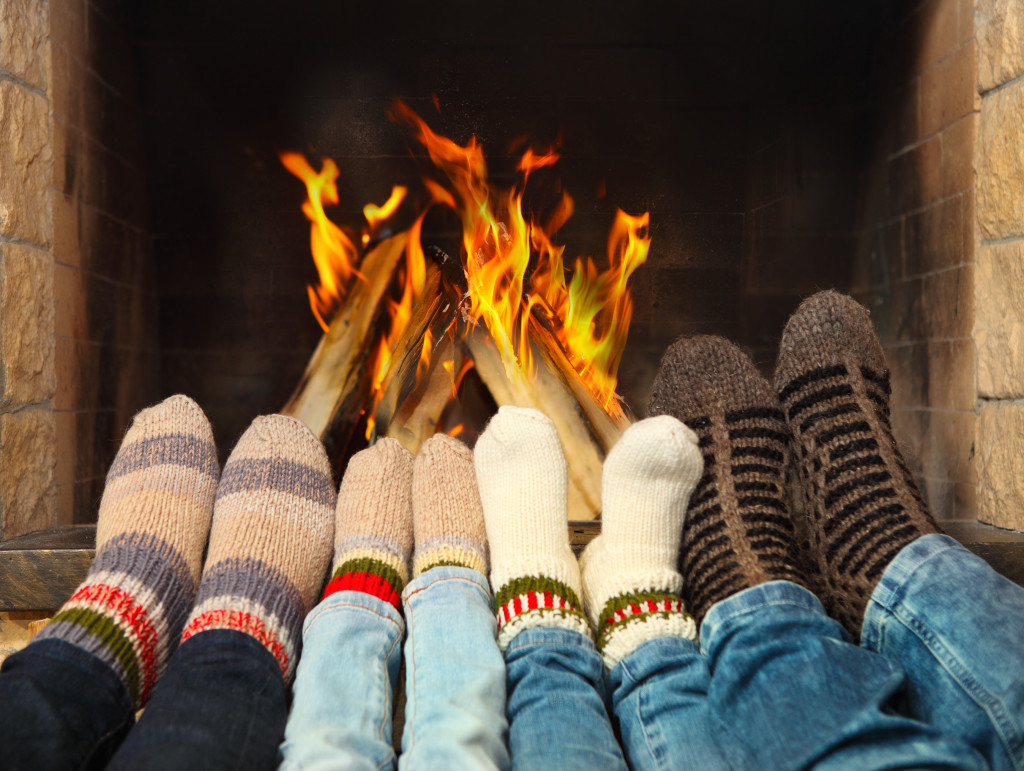Heating is one of the essential things that we need in our daily lives. It’s crucial that we have it to keep our bodies and our environment warm. It’s also vital if we want to keep our homes as cozy and comfortable as possible. However, heating wasn’t an easy feat thousands of years ago; it’s only relatively recently that we’ve made heating available for everyone. Here’s a brief look into the history of heating systems and how they’ve evolved through the years.
Fire from Nature
It’s crazy to think that the very first time we developed a heating method was about 1.5 million years ago. Back then, our ancestors encountered fire made primarily by combustible plants in savannahs and forests. It’s believed that our ancestors didn’t create those fires themselves, as they didn’t know how. Instead, they only added fuel to these fires to keep themselves warm throughout the night. Furthermore, our ancestors picked up animals burnt in fire as a source of food.
Starting Fire and Campfires
It is yet unknown when human beings started to create fire for heating. It’s believed that we used flints more than 400,000 years ago, but the only proof we can find was dated 40,000 years ago. Back then, fires were mainly made to cook food, and their heating properties weren’t extensively explored. But some experts suggest that some neanderthals built homes with fireplaces in them. They even left holes in their roofs for smoke ventilation. Although it’s unclear whether such homes did exist, the possibility is there. The proof of home heating and even central heating was found during the time of the Greeks and the Romans.
Home and Central Heating
The “grandfather” of heating systems can be traced back to the time of the Greeks and Romans. Hypocausts were used to heat various rooms and even public baths back then. This complex structure is easy to imitate today, but it is considered to be highly inefficient. But for Greeks and Romans, it did the job well.
Hypocausts produced hot air under a particular room and structure and used pipes to deliver the heat to the walls to other areas. Interestingly enough, because of the nature of hot air and its ability to always rise higher than cold air, this contraption was able to heat upper levels of structures. During the fall of the Roman Empire, heating systems reverted to their primitive forms, and it was only during the 1200s that home heating was again re-introduced to the world.

The 1400s to 1700s
This is a concise period with barely any evolution in heating. During this era, wood furnaces and chimneys were developed, and fireplaces in homes were more common. Like the one made by the Romans, central heating wasn’t all that dominant, as most forms of heating relied heavily on fireplaces.
Steam-Based Heating
James Watt was the first inventor of steam-based heating. He utilized steam from pipes and other mechanical structures to heat various rooms of his home. He also created a central boiler for this. Gradually, other homes did the same thing as well.
Radiators
Radiators were invented in 1855 by Russian inventor Franz San Galli. People during his time made use of this invention to fight off extremely cold temperatures. It was one of the first portable kinds of heating, and it was later used as the main component of centralized heating.
Electrical Heating
The father of heating systems today can be traced back to 1883 when Thomas Edison invented the electric heater. The very first electric heater was made from elongated light bulbs that Edison invented. This kind of heating can still be found in many ovens today but is no longer used in home heating because of its rudimentary design.
Modern and Smart Heating
After the invention of the radiator and electrical heating, many forms of heating were just reinventions of these things. Eventually, it was in the early 2000s when we started to develop heating systems that machines can manage. Today, we now have these “smart” heaters in our homes to regulate the temperature of each room. Although not as robust as electrical or furnace heat, innovative heating still gets the job done. However, wooden fires are still being used as a prime source of heating. Many companies are looking for ways to improve this primitive kind of heating better, and some of these improvements are being sold in online shops, such as ultimatefires.com.au. These wooden heaters can heat people’s homes the same way modern technologies do. They’re also safe to have inside your home and can also be used for centralized heating. Some can even be used for cooking. The modern way of heating can easily be a mix of modern and primitive ways of heating. It’s just that we’ve learned to improve on these things better than before.
Heating systems have gone through a long and complicated history with various inventors and discoveries throughout their lifespan. As a result, the way we do heating today is a mix of both modern and primitive ways of heating. Both ways have become ever more accessible to us, and it’s just up to our preference as to which kind of heating we choose. This harmonious mix of the past and the present can’t be seen in many technologies we have today. It is good to see that heating systems are one of the few technologies that respect their heritage and still use traditional methods to their advantage.

